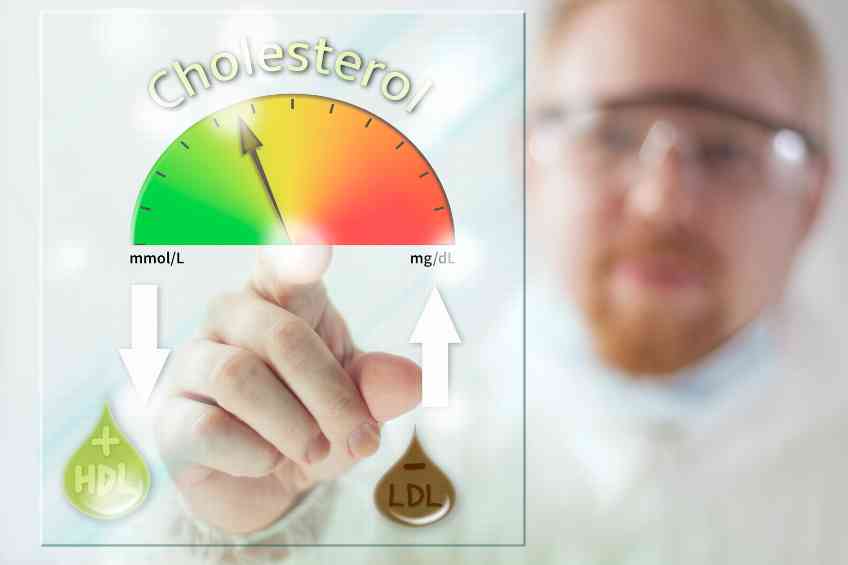By John Salak –
Worried about cholesterol? There is a good reason. It seems like everyone is obsessed with it. Ultimately, knowledge is power when it comes to tackling its challenges and risks. So, it’s essential to get a handle on questions like, what is it, and where does it come from? What do all those test numbers mean? And what the heck is HDL, LDL and triglycerides?
This challenge is difficult to overcome because nobody ever complains about cholesterol symptoms. So why do doctors have their knickers in such a twist over its dangers? A cholesterol primer is the first step towards some answers and salvation. But it is only a start. Consulting a medical professional is essential. In the meantime, however, consider the following.
What is Cholesterol?
The bottom line: it’s a lipid, a waxy substance that comes from the liver. Here’s the tricky part. People can’t live without cholesterol because the liver needs it to process fat. It is also essential for making estrogen, testosterone and vitamin D. Beyond this, cholesterol, like fat, is not soluble in water or blood. It is transported through the blood in tiny, protein-covered particles called lipoproteins. There are three important ones: low-density lipoproteins (LDL), high-density lipoproteins (HDL) and triglycerides, which are chains of fatty acid molecules.
Why The Worry?
The Cleveland Clinic warns that too many blood lipids can form plaque on arterial walls, effectively narrowing them. It is otherwise known as “atherosclerosis.” The danger is that this narrowing can result in coronary artery disease, high blood pressure, angina, heart attacks or heart failure. If that’s not bad enough, narrowing blood vessels can impair brain functions and lead to strokes if these plaques break off and block the brain’s blood supply.
The Good, the Bad and the Ugly
It is where it gets confusing. Cholesterol is essential, but also blocks arteries and creates health havoc. The issue is that not all cholesterol is created equal. There is good, bad and ugly cholesterol. High-density lipoprotein or HDL cholesterol is good because it carries excess cholesterol out of the arteries to the liver, where it’s converted to bile salts and excreted. Low-density lipoprotein, or LDL cholesterol, is definitely the bad stuff. It is big and fluffy and can stuff up arteries and form plaques. Triglycerides may be ugly thanks to having three chains of fatty acids attached to a glycerol molecule, but you can’t judge a lipid by its looks. Triglycerides are okay because they transport fats through the blood to cells.
Passing The Test
Few people enjoy taking tests or getting their grades, but it is essential when it comes to checking cholesterol levels. Adults should get a lipid panel blood test once every five years. What are the right results? HDL levels should be over 55 milligrams per deciliter of blood (mg/dL) for females and 45 mg/dL for males. The higher, the better HDL levels. LDL levels are better if they’re under 100 mg/dl. In fact, 100-129 is considered good, while 130-159 is borderline high, and 160-189 is dangerously high. Triglycerides are another matter entirely. They should fall below 150 mg/dL. If those are enough numbers to deal with, testing should also yield a Total Blood Cholesterol number, calculated as HDL plus LDL and 20 percent of the total triglycerides.
What’s The Cholesterol Catch?
Diet definitely plays a factor in a person’s cholesterol levels. However, Harvard University reports that genetic factors account for about seventy-five percent of a person’s cholesterol levels. Hormones, in fact, affect females’ cholesterol levels and this increases during pregnancy and lactation. Women also face increased risks after menopause because LDL cholesterol increases, and their protective HDL levels decline. On the diet side, the biggest influence doesn’t come from the amount of cholesterol consumed, but rather the mix of fats and carbohydrates. Nonetheless, excessive cholesterol consumption should be avoided. The main sources include meat, seafood, poultry, eggs and dairy products.
Medication Treatments
Statins are the most common treatment for high cholesterol. They help the liver lower LDL cholesterol levels. They’re especially critical for the small percentage of those who suffer from genetically high cholesterol. Bile acid sequestrants, niacin or nicotinic acid, fibrates and injectable PCSK9 inhibitors are other important treatments. Counter to popular belief, treatments do not have to be lifelong engagements. In addition, poor cholesterol levels can be overcome through diet and exercise.
Demographic Realities
Cholesterol problems are not the sole providence of older folks. Overall, one out of three adults may have issues. But recent studies also show that 26 million younger adults ages 18 to 39 also have borderline high or absolutely high LDL cholesterol. This number accounts for 27 percent of that age group.
Ultimately, tens of millions of Americans are saddled with bad cholesterol levels for a variety of reasons, making it a national health threat. The WellWell primer is great for getting an initial handle on the issue, but it is only a first step at understanding the consequences and treatments—and a tiny step at that. Testing and working with medical professionals represent the best solution for identifying and offsetting problems.













